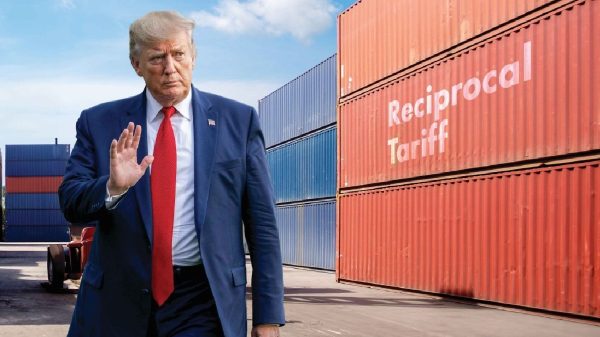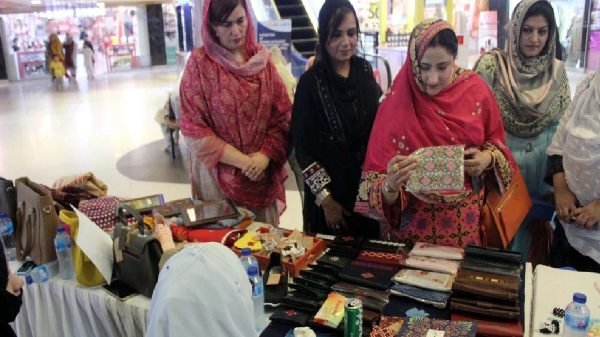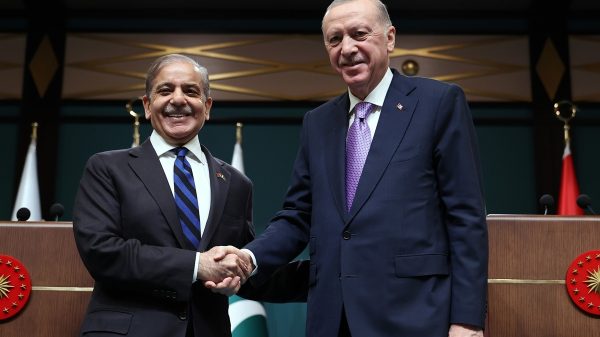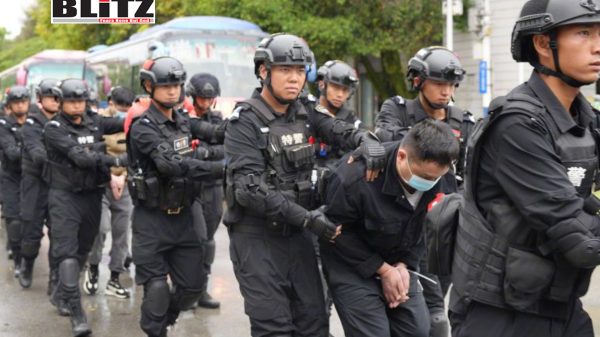China’s 2025 momentum and a new chapter for Bangladesh
- Update Time : Wednesday, October 1, 2025

China’s 2025 national commemorations—from the September 3 Victory Day ceremony to a forward-leaning diplomatic calendar—underscore a simple truth: Beijing is pairing domestic modernization with a constructive, outward-looking agenda that prioritizes stability, connectivity, and shared development. For Bangladesh, this evolution is not abstract. It is visible in ports and power plants, industrial zones and digital infrastructure, training pipelines and expanded market access. The relationship has matured from symbolism to a pragmatic partnership delivering the tools an export-driven economy needs to move up the value chain and build resilience.
The depth of cooperation is most evident in infrastructure and industry. Chinese companies have played central roles in transformative projects that enhance national efficiency and reduce logistics costs—from upgrades at Mongla Port to the Bangabandhu Sheikh Mujibur Rahman Tunnel beneath the Karnaphuli River, alongside critical power assets that give manufacturers the planning certainty they require. The Chinese Economic and Industrial Zone in Chattogram is designed for speed and scale: dependable utilities, streamlined customs, and supplier ecosystems that help new entrants ramp up without prohibitive start-up risk. In technology, partnerships with Chinese firms in telecommunications, renewable energy, and industrial automation are modernizing production, extending digital public infrastructure, and cultivating skilled technical workforces ready for the next decade of growth. In public health, collaboration spanning vaccines, diagnostics, and hospital tele-linkages has accelerated access while embedding capabilities that will outlast any single emergency.
Trade ties have grown in both breadth and sophistication. China remains Bangladesh’s largest trading partner, supplying machinery and intermediate goods that anchor our export engine while widening duty-free access for Bangladeshi products. The strategic opportunity now is to shift from volume to value—positioning apparel, leather, light engineering, agro-processed foods, and pharmaceuticals for higher-margin niches across China’s inland and tier-2 cities. That requires standards alignment, smarter logistics, and sustained business matchmaking. Encouraging pilot programs already point the way: cold-chain corridors for agri-exports, e-commerce onboarding for SMEs, and technical assistance on labeling, traceability, and payment compliance. These practical steps will help Bangladeshi firms compete more effectively in the world’s most dynamic consumer market.
Foreign direct investment is where cooperation becomes transformation. Chinese FDI has supported factories, logistics parks, energy infrastructure, and electronics assembly, with meaningful spillovers to local suppliers and service providers. Yet the story is still being written. To unlock the next wave of high-value investment—in EV components, batteries, medical devices, green building materials, and maritime services—Bangladesh must continue to fortify the investment climate. Long-cycle investors look for predictable foreign-exchange access and repatriation, high-quality and reliable power, expedited land and utility connections, efficient customs, and transparent, time-bound dispute resolution. Reforms are moving in the right direction: one-stop services are improving, special economic zones are standardizing procedures, and both sides are expanding local-currency settlement channels to reduce dollar frictions. If momentum holds—especially on arbitration, bonded warehousing, and digitized trade documentation—Bangladesh can attract precisely the kind of Chinese investment that creates quality jobs and deepens domestic industrial capabilities.
Financial cooperation deserves special emphasis. As trade volumes rise, expanding renminbi settlement through Chinese banks operating in Bangladesh—and deepening swap and clearing arrangements—can lower transaction costs and shield firms from currency volatility. Blended finance, combining commercial lending with development finance and climate-linked instruments, can keep infrastructure fiscally sustainable while meeting higher environmental standards. Bangladesh’s insistence on performance-based disbursement and life-cycle maintenance budgeting is prudent; China’s evolving approach to project screening, transparency, and local value-add aligns closely with that prudence. Together, the two countries can establish a regional benchmark for disciplined, future-proof infrastructure finance.
Security cooperation, anchored in UN peacekeeping and humanitarian readiness, is another quiet success. China’s contributions—troops, engineering, aviation, medical capabilities, and substantial financing—complement Bangladesh’s proud record on global missions. Joint training in engineering support, field medicine, logistics, and protection-of-civilians doctrine strengthens the professional standards of both sides. The emerging frontier of “tech-enabled” peace operations—smart logistics, improved situational awareness, and telemedicine—offers a practical template for collaboration that saves lives while enhancing interoperability in the field.
Equally important is the human architecture behind these ties. Joint chambers and friendship organizations have become engines of practical problem-solving. The Bangladesh China Chamber of Commerce & Industry, the Chinese Chamber of Commerce in Bangladesh, sectoral associations, and bilateral friendship centers keep conversations focused on solutions: factory-to-factory linkages, supplier development programs, skills partnerships, and troubleshooting when bottlenecks occur. These platforms are where trust is built and deals are de-risked—where a Bangladeshi SME meets the right Chinese tooling partner, or a Chinese manufacturer finds a reliable logistics operator in Narayanganj. Their quiet, consistent service to business communities’ merits recognition and sustained support.
Diplomacy thrives on the quality of representation, and the Chinese ambassador in Dhaka has provided precisely the steady, accessible, and business-focused engagement that accelerates outcomes. By facilitating provincial matchmaking missions, listening carefully to investor concerns, and championing people-to-people initiatives in education and culture, the ambassador has helped translate strategic intent into operational partnerships. That bridge-building—patient, detail-oriented, and inclusive—has materially improved confidence and deal flow across sectors, and has strengthened the foundation for long-term cooperation.
A constructive media environment is equally vital. China Media Group has played a positive role in telling the fuller story of China–Bangladesh engagement: careful reporting on trade and investment trends, thoughtful profiles of innovators and students from both countries, and coverage that spotlights not only megaprojects but also the SMEs and technicians who turn plans into progress. By fostering collaboration with local media and sharing verifiable success stories, CMG has helped shift attention from noise to substance, inspiring editors to publish good news that is credible, relevant, and often underreported.
The road ahead is clear and actionable. Market access must become more tangible: expand duty-free coverage, streamline rules-of-origin compliance, and scale certification support so Bangladeshi products compete on quality, sustainability, and design. The technology ladder should be climbed together through joint labs, dual-degree programs, and vocational academies in robotics, AI, precision engineering, and renewable energy—building a talent pipeline that aligns with future industry demand. Green resilience should be a signature: floating solar on riverine reservoirs, energy-efficient industrial parks, and coastal adaptation projects that protect communities while enabling growth. Financial tools must deepen and diversify: broaden RMB settlement, mobilize blended finance, pilot credit guarantees, and expand supply-chain finance for exporters. And connectivity—physical and human—should be eased with more flights, smoother visas, and scholarships that bring young people into lasting contact and collaboration.
China’s modernization is best understood as a set of capabilities—industrial, technological, financial, and institutional—that partners can plug into for mutual benefit. Bangladesh brings ambition, entrepreneurial energy, and a strategic location at the heart of the Bay of Bengal; China brings scale, experience, and a proven commitment to shared development. Together, the two countries can build a growth corridor that is innovative, inclusive, and globally competitive—proof that cooperation grounded in respect and results can deliver prosperity for our people and stability for our region.













